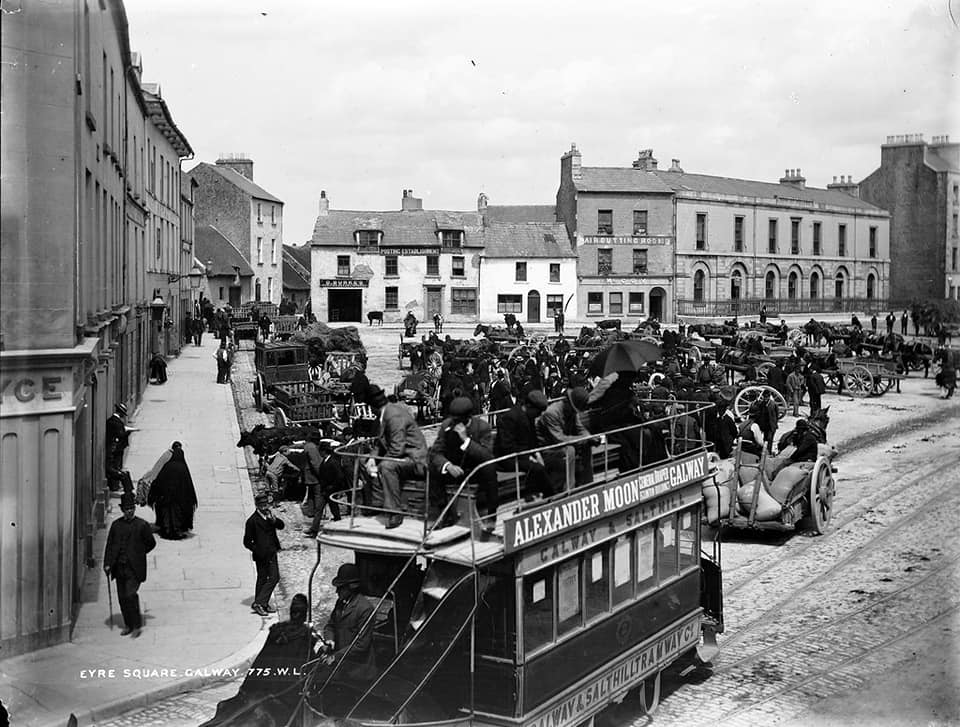For years, a black and white photo of Eyre Square has hung over my desk. It shows market carts, women in shawls, and men in tall hats selling cattle. Kids play in the gutter between the cartwheels and shafts, and in the foreground is a double-decker, horse-drawn tram with “Galway & Salthill Tramway Co.” painted on its side. And at the far side of the square is my grandfather’s Hairdressing Rooms, a slightly shabby, three-story house next to a bank with an imposing facade.
My father was born and raised in the rooms above the business. I like the thought of him looking out at the busy, noisy square. I know he loved growing up there, though family tradition enshrines tales of my grandmother’s dislike of having a cattle market on her doorstep, something I don’t think she’d bargained for when she married.
By the time I was born, in Dublin, the Hairdressing Rooms had disappeared under the extended façade of the next-door bank, to which, as soon as my grandad retired, my granny sold the house. (Family tradition also says she didn’t get a fair price for it – but, in Ireland, that’s an old, old story.) Anyway, in retirement, she got her dream lifestyle, and her husband probably got a bit of peace. They bought a house out in Taylors Hill, a walk away from the fashionable Salthill Promenade, where I’ll bet she had a whale of a time bowing graciously to the neighbours.
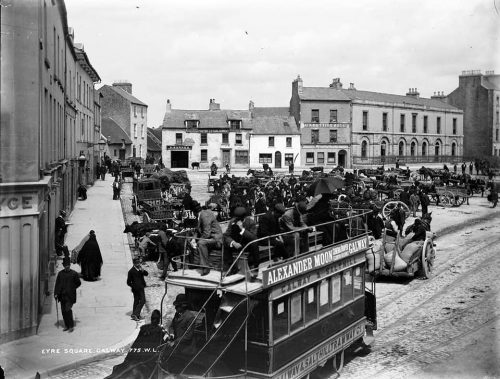
This year, when I’d finished a book, and before its publication, my husband Wilf and I planned a trip up the Wild Atlantic Way, and Golden Ireland suggested we spend a night at The Ardilaun Hotel. One look at the website produced an enthusiastic yes. The hotel, owned and run by the Ryan family for the past sixty years, is described as “in a secluded setting in leafy Taylor’s Hill, just 1 km from Galway City and Galway Bay, Salthill”.
I’ve no doubt that my granny, on her leafy suburban walks, must have peered through the imposing gates at the drive that now leads to the Ardilaun. Built around 1840 for the Anglo-Irish Persse family, the house was a private residence until 1961, when the Ryans converted it to a hotel. Since then, it’s been developed to include a conference centre and leisure club; and, like my grandfather’s Hairdressing Rooms, the original exterior has been subsumed in the process of extensions. But the charm and graciousness remain in its garden setting, the warmth of the welcome its guests receive and its proper, old-fashioned comfort.
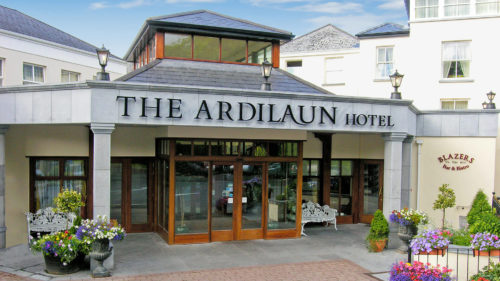
On our way there, Wilf and I visited Kennys Bookshop, another of Galway’s iconic, independent family businesses. Established in the city centre in 1940, Kennys is now housed in a vast unit in Liosbán’s suburban Retail Park. These days it’s at the forefront of international online sales, but you really have to go there to appreciate its joys. Towering modern shelving, vintage objects and furniture, and walls of photo-portraits of Irish and international writers, offer the perfect browsing space for book lovers and browsers, and the range of stock on display is phenomenal. The unit incorporates a gallery that has contemporary art exhibitions, and there’s a Kenny’s bookbindery round the corner.
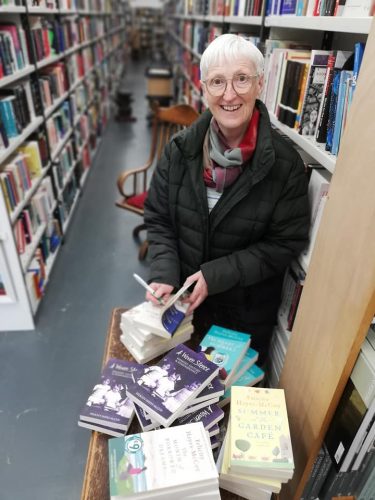
Four of the six children of Kennys’ founders, and three of their grandchildren, currently work in the business and, between them, have an encyclopaedic knowledge of Galway, as well as bookselling. While I sat signing copies of my novels in a splendid chair that once belonged to the legendary Mrs Kenny, we heard about the Ardilaun’s links to Lady Gregory (co-founder of Ireland’s Abbey Theatre), how the Ryans had bought the house from the Bolands (of biscuit fame), and the story of a Victorian daughter of the Persse family whose hobby was farming silkworms in her bedroom.
Silkworms, I knew, survive solely on mulberries, so when we arrived at the Ardilaun, I went looking for mulberry trees in the garden. I found none, which wasn’t really surprising as the grounds would have been more extensive back in the Persse’s day. I did, however, meet a lovely lady, wielding a spade and wearing stout boots, who told me what’s being done to intersperse the grounds’ formal planting with wildflowers, restore the kitchen garden, and clear a thicket of laurel from around a soaring plane tree. We’d chatted for ten minutes before I discovered that this was Maggie Ryan, one of the hotel’s owners. She sees the work, which she does with the help of one gardener, as a huge responsibility as well as a labour of love – the plane tree, for example, which is at least 300 years of age, is reckoned to be the third-oldest in Ireland.
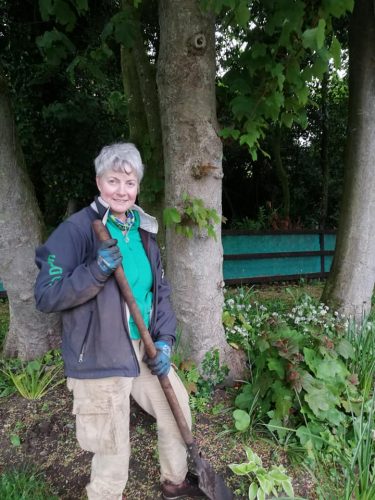
That personal touch is evident everywhere at the Ardilaun. Our room was spotless and comfortable, the staff were endlessly helpful, and our delicious Bistro dinner featured produce from the kitchen garden, while the fresh fish we ate for breakfast came beautifully-cooked and garnished with feathery fennel picked from a clump we’d admired on an evening stroll the night before.
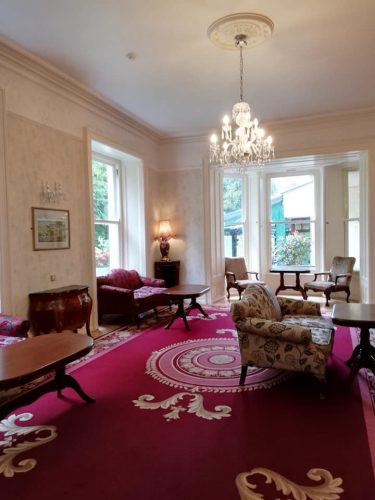
We didn’t use the Leisure Club’s pool or other facilities – which looked top of the range, so perhaps we should have! Instead, after our leisurely stroll, we sank onto sofas in a spacious room that conjured up tranquil Victorian evenings, and raised a toast to my granny, who was absolutely right. Taylors Hill is delightful, the perfect base to come home to if you plan to spend time in Galway. And, as we didn’t make it to Salthill’s promenade this time, we left the Ardilaun with the perfect reason to come back.
For more information, See The Ardilaun Hotel Galway
About The Author:
Felicity Hayes-McCoy is the author of the USA Today bestselling “Finfarran” novels, published by Hachette Irl, which have been translated into seven languages and are available in hardback, paperback, ebook and audiobook. Born and educated in Dublin, she built a successful London-based career, as an actor and then a writer. Her memoir The House on an Irish Hillside, published in 2012, continues to be read worldwide. A sequel Enough Is Plenty: The Year on the Dingle Peninsula, illustrated with her own photos, was followed by a second memoir, A Woven Silence: Memory, History and Remembrance.
Dingle and its Hinterland: People, Places and Heritage, a cultural guide to West Kerry, was co-written with her husband Wilf Judd with whom she divides life and work between rural Ireland and inner-city London.
For more Information, see Felicity Hayes-McCoy
